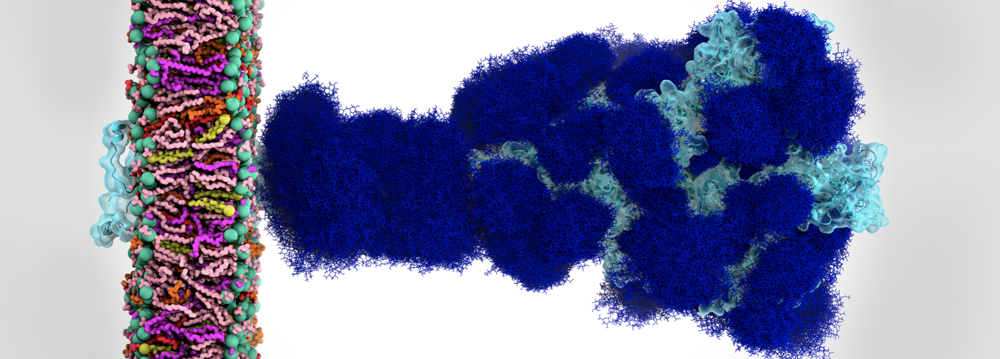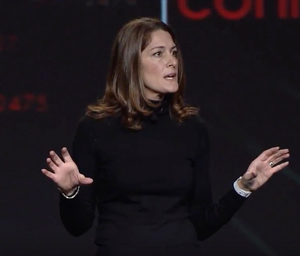Researchers using the Frontera supercomputer at the Texas Advanced Computing Center (TACC) have uncovered the atomic makeup of the sugary shield on the coronavirus that could provide important insights into the workings of the contagion.
Simulations on Frontera by scientists at the University of California San Diego have revealed that the shield, called glycans, prime the coronavirus for infection by changing the shape of its spike protein and camouflage itself as harmless from defending antibodies.
When functioning effectively the human immune system can recognize foreign intruders and generate antibodies to destroy them. The question for scientists is how, exactly, the SARS-CoV-2 virus fends of human antibodies. Rommie Amaro, a professor of chemistry and biochemistry at UCSD and colleagues are using computational methods to build data-centric models of the virus, and then use computer simulations to explore different scientific questions about the virus.
They started with experimental datasets that revealed the structure of the virus, including cryo-EM structures from the Jason McLellan Lab of The University of Texas at Austin; and from the lab of David Veesler at the University of Washington. “Their structures are really amazing because they give researchers a picture of what these important molecular machines actually look like,” Amaro said.
Details of the glycan shielding have been too difficult for experiments to resolve. “What people really want to know, for example vaccine developers and drug developers, is what are the vulnerabilities that are present in this shield,” Amaro said.

Simulation of the COVID-19 coating using the Frontera supercomputer.
Amaro and her team have used about 2.3 million Frontera node hours for molecular dynamics simulations and modeling, the most among any researchers using the system to study COVID-19, according to TACC. She used up to 4,000 nodes, or about 250,000 processing cores. Frontera is the world’s fifth most powerful supercomputer and fastest academic system, according to November 2019 Top500 ranking.
Considerable compute power was needed to animate the dynamics of the 1.7 million atom system under study, said Amaro. “That’s really where Frontera has been fantastic, because we need to sample relatively long dynamics, microsecond to millisecond timescales, to understand how this protein is actually working.”
“We’ve been able to do that with Frontera and the COVID-19 HPC Consortium,” Amaro said. “Now we’re trying to share our data with as many people as we can, because people want a dynamical understanding of what’s happening — not only with other academic groups but also with different pharmaceutical and biotech companies that are conducting neutralizing antibody development,” she said.
Amaro and her team have used about 2.3 million Frontera node hours for molecular dynamics simulations and modeling, the most among any researchers using the system to study COVID-19, according to TACC. She used up to 4,000 nodes, or about 250,000 processing cores.

Prof. Ronnie Amaro, UCSD
The glycan molecules coat each of the 65-odd spike proteins that adorn the coronavirus and account for about 40 percent of the spike protein by weight. The spike proteins are critical to cell infection because they lock onto the cell surface, giving the virus entry into the cell.
Amaro is a corresponding author of a study, “Shielding and Beyond: The Roles of Glycans in SARS-CoV-2 Spike Protein,” published today on bioRxiv.org. “You can see very clearly that from the open conformation, the spike protein has to undergo a large structural change to actually get into the human cell,” Amaro said.
More details can be found at this TACC podcast: https://soundcloud.com/usetacc/sugar-coating-locks-and-loads-coronavirus-for-infection
Source: Jorge Salazar




